When Was Welding Invented? A Complete History
Last Updated on
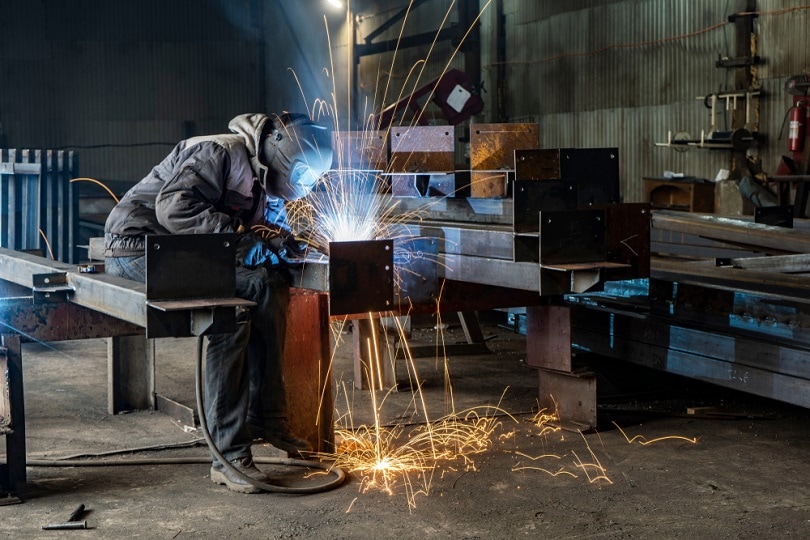
Many people may not know this, but welding is a technique that has been used for ages. The first welding activities took place during the Early Bronze Age. To understand the history of welding, one must dig deeper into aspects like its early forms, and its evolution over time. Besides, by understanding the history of welding, you will learn about the different inventions and how much they have evolved.
Archaeological evidence has provided artefacts collected from prehistoric sites that date back to the Bronze Age and the Iron Age. For example, there is evidence that proves the Egyptians welded iron together. Gold boxes welded more than 2,000 years ago were discovered in the Egyptian pyramids.
All the current welding methods where modern tools are used started during the industrial revolution in the 1800s. Understanding the history of welding and the numerous inventions is crucial to all welders interested in building their careers in this industry.
Who Invented Modern Welding?
Welding entails using fusion processes to join metal or plastic parts together to build or restore metal structures. No one can be regarded as the sole pioneer of welding now that it is not possible to determine the exact group of ancient civilizations that started the practice.
It took 45 years for the current welding form to see the light of day. It would be fair to say it has been a combined effort to get the industry this far. Nevertheless, some names cannot go unmentioned since they have made significant contributions to the field. August De Meritens is the first known man to have played an essential role in welding invention, as he connected the lead sheets using arc heat. Nikolai Benardos invented the process of electric arc, which involved the use of carbon rods. C.L. Coffin then created the famous metal electrode and the arc welding process.
There are still more inventions and innovations coming up. Why not invent some welding trick too? You could make it to the walls of the hall of fame!

The Timeline and History of Welding Inventions
For nearly two thousand years, there wasn’t much change in the welding sector. For instance, until the early 1800s, there were still no significant shifts in trade. In that stagnation, what existed wasn’t too far from the earlier professional efforts of some of the most respected Viking blacksmiths who lived to forge weapons, tools, horseshoes, and many more.
Let’s look at a step-by-step breakdown of how far the welding industry has come.
1. Welding Inventions in the B.C. Period
Hammering and bending of metals were practiced first in the B.C. era. Many studies contend that in Ancient Egypt, welding began around the year 4000 B.C., with copper as the only welded metal. Over time, the process improved, and other metals such as silver, gold, bronze, iron, and steel welds gradually found their base in welding.
Around 3500 B.C., tin was discovered. The following centuries were marked with experimental works using bronze. This was around 3000 to 2000 B.C, almost the same period when gold boxes with pressure welded joints were discovered in Egyptian pyramids, as previously mentioned. Additionally, people started welding metals into kitchen utensils, farming tools, hunting tools, arms, and jewelry pieces.
In 3000 B.C., Sumerians were the first to use hand soldering to manufacture their swords. During the same period, Ancient Egyptians converted iron ore into sponge iron using heat generated from charcoal.
Mercury was found around 1500 B.C., marking the onset of iron smelting processes. Around 1330 B.C., the Ancient Egyptians used solder and a blowpipe to undertake metal soldering. Ironworks started around 300 years later, in 1000 B.C.; this was at the time when streets roared with furnaces that were important in bending the metals required to manufacture swords, spears, arrows, and bowheads.
In Ireland, locals developed the art of hammering lapped joints to fabricate gold boxes. The Egyptians began to create simple tools made of iron between 900 and 850 B.C. During this time, iron’s popularity slowed down as individuals became increasingly acquainted with the significance of gold and copper.
Babylonians also began producing arms molded from iron during the same epoch. At this point, welding inventions started to pick up the pace, with each region having its fair share in successful welding inventions.
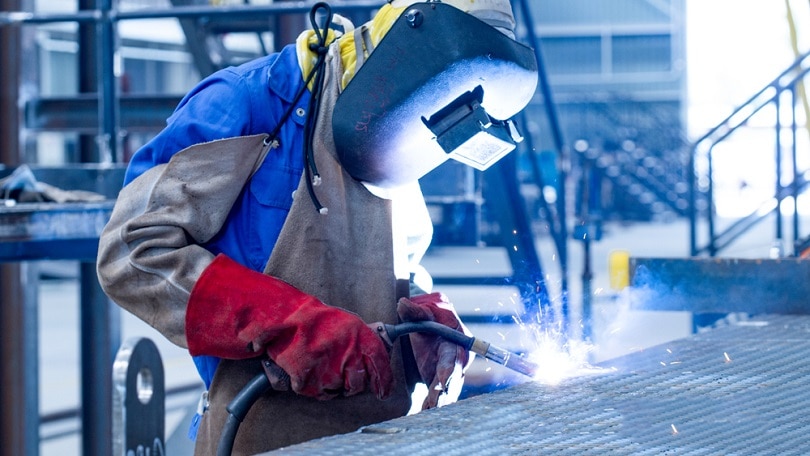
2. Welding Inventions in the A.D. Period and Middle Ages
60 A.D. is the first known time during which the gold brazing process came to life. Pliny, an author who lived during the early Roman Empire, documented this. In his works, he recorded the process by explaining how natural salts functioned.
Another critical breakthrough in welding happened in 310 A.D. During this period, an iron pillar weighing over five metric tons was built using welding in India. Between 300 and 400 A.D., structures would be erected using these welded pillars, as evident in Rome, Scandinavia, and England.
In 589 A.D., for the first time during the Sui Dynasty period, the Chinese transformed wrought iron into steel. The famous Japanese Samurai sword was made using molding and welding methods.
In 1000 A.D, Theophilus the Monk wrote a detailed manuscript describing combining flux to braze silver. The metal Zinc was also discovered in 1375. Forge welding was the root of every single advancement or invention made by welders between the 5th to 14th centuries, also known as the Middle Ages.
3. Welding Inventions from 14th to 17th Century
Another important year for welding was in 1568, when Benevento Cellini, a goldsmith from Italy, explained how a solder could braze an ally manufactured from copper or silver. The term weld was first mentioned and also used in 1599. In the modern welding era (from the 1800s), welding inventions were growing slowly but steadily.
4. The Beginning of Inventions in Modern Welding Technology
People have continuously developed more efficient techniques for precise, quick, and effective welding. In the 1800s, most inventions came from England, and in the 1900s, several countries worked on welding inventions to help fight WW1 and WW2. Most modern innovations in the welding sector began in the 1970s.
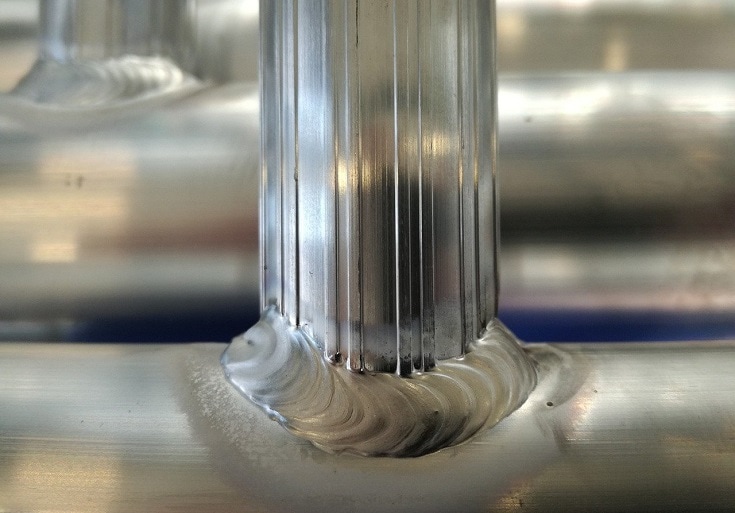
5. Welding Inventions in the 1800s
At the beginning of the 1800s, C.L. Coffin got an award for the first-ever Patent application meant for a welding process in Detroit. Courtesy of Coffin, welding resistance (assembly of metals by exerting pressure and transmitting electrical charge) is now a practicable procedure.
Other significant inventions that came in late 1800 include:
- 1881, a French scientist, Auguste De Meritens, utilized the heat generated by arcs to weld plates.
- 1881, the famous Nikolai N. Benardos invented an electrode holder.
- 1890, American Engineer C.L. Coffin invented a process where metal electrodes were used to make arc welds.
6. Welding Inventions in the 1900s
In 1990, Strohmenger invented a coat for metal electrodes. Then, immediately after the First World War ended, Comfort Avery Adams founded The American Welding Society
The American Welding Society was established in 1919 with just 20 members from the famous Wartime Welding Committee for the Emergency Fleet Company. The alternating current was also invented the same year.
The New York Navy Yard, in 1930, invented stud welding. During that same period, automated welding was commonly used in the construction industry and shipbuilding. The more advanced ‘Union melt welding’ sub-process was also developed in the early thirties.
During the 1940s, Gas Tungsten Arc Welding (GTAW) “was successfully utilized for welding magnesium in jet fighters, and eventually discovered to be capable of welding stainless aluminum and steel.
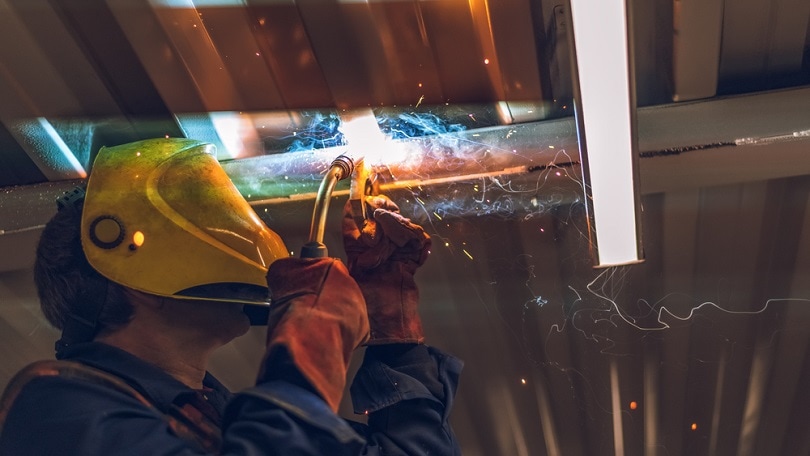
In 1953, Lyubavski and Novoshilov popularized the process of C02 welding, and it turned out to be one of the most preferred methods used in welding steel. In 1958, the process of dip transfer welding or micro-wire vibrations from GMAW’s short-circuit arc was invented. The process involves using consumable electrode welding in an atmosphere with CO2. Then its popularization began in the 1960s. Since that time, the CO2 welding process has been used by welders globally.
Robert M. Gage then invented plasma arc welding in the 1960s. That same year, the French people invented electron beam welding, which the U.S.-based aircraft manufacturers still use to date. In 1962, Sciaky, an American manufacturer, welded Mercury Space capsule. The 1970s saw many new soldering inventions from America, Europe, and Asia.
- See also: How to Weld Plastics
7. Modern Era Welding Inventions
The Modern Era in welding began in 1991 and ended in 2013. Many of the welding methods you use today must have come from this period. Some of the most significant advances in the new period of welding include;
- An on-board processor
- Automated welding processes
- Various inert gases used
- Extremely advanced electrode technology
The first significant breakthrough in the welding process was the TWI by Friction Stir Welding around 1991. A few years later, in 1999, the next big breakthrough came to life; it was a process that raised the welding flux penetrating up to 300%.
The welding process of the magnetic pulse was invented in 2000. During this same year, the first metal composite could be welded using X-rays. Then the Laser-arc-hybrid welding invention came in 2008, followed by the creation of Gas Metal Arc Welding-Brazing in 2013, a procedure that fuses steel used in automotive assembly lines.
Finally, the new era offered lap joints and laser technology used to weld aluminum and steel (low carbon) welding.
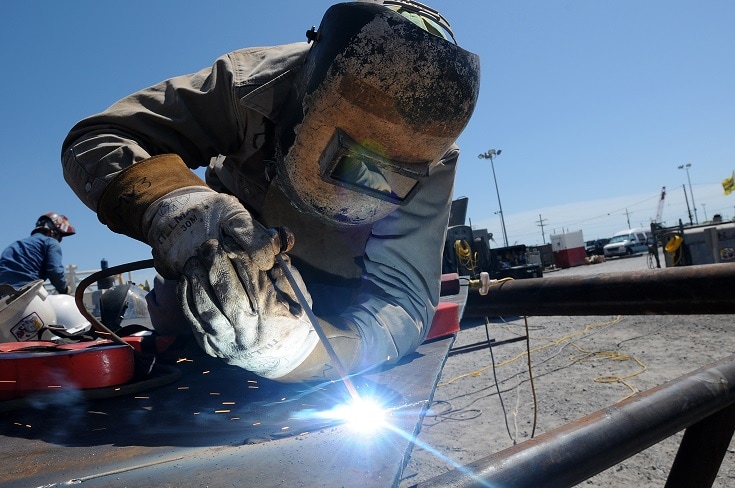
Futuristic Welding Invention
Studying history, they say, helps us understand the present and predict the future. Now that we’ve learnt how welding has thrived through ages, this knowledge makes it possible to foresee how prospective the welding career will grow. An example of a more predictable trajectory in welding is largely depending on Artificial Intelligence for mass production. Thanks to technology, welding will most definitely be automated.
Also, welding materials will have an increased demand for raw materials such as metals needed to manufacture products. This is because every sector needs welding services at some point, whether on a large or small scale. When demand overrides supply, people have to be innovative in order to fill those gaps. Technology will again provide solutions to mitigate such deficits, by developing chips with better features like longer life cycles.
Another predictable pattern is that as the quality of products increases, the cost of production will go down. The welded items will be more accurate, aesthetic, and timeless.
Conclusion
While some careers and businesses are on their last legs due to market influx, welding has and still will stand the test of time. It has come a long way, and its relevance can never be under looked.
From its roots in the age of Egyptian civilization to today’s world, welding is the primary method used to fuse two pieces of metal or metal and various materials to create a strong bond that would not allow the two to detach.
Featured Image Credit: Suvorov_Alex, Shutterstock
